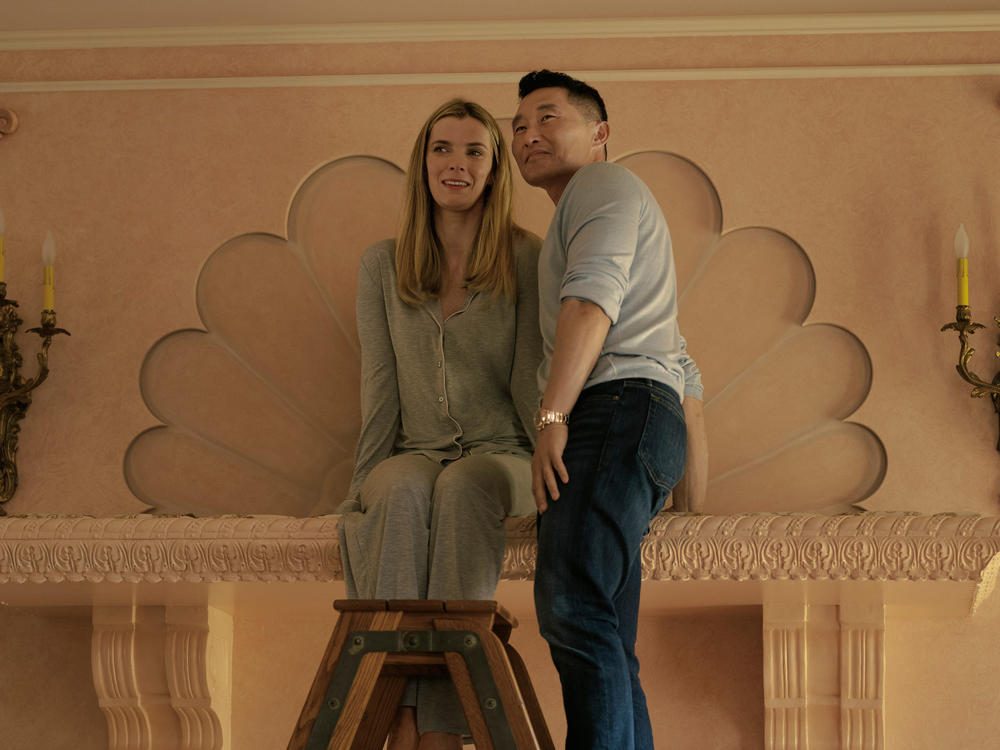Section Branding
Header Content
In Apple TV+'s 'Roar,' stories of womanhood are satisfyingly weird
Primary Content
The new anthology series Roar on Apple TV+ tells eight stories of women in different emotional states. Some of the stories are more comic, some are more dramatic. The series doesn't have a single, obvious thematic throughline the way, say, the tech-dreading Black Mirror does. What unifies the chapters, other than that they are about women in a variety of circumstances, is that they are satisfyingly, pleasantly weird.
Roar has led its promotion with its cast: Episodes are led by Cynthia Erivo, Nicole Kidman, Issa Rae, Merritt Wever, Fivel Stewart and Kara Hayward (Hayward played Suzy in Moonrise Kingdom ten years ago), Meera Syal, and GLOW veterans Alison Brie and Betty Gilpin – working again with GLOW creators Liz Flahive and Carly Mensch, who adapted the series from Cecelia Ahern's book of stories.
The installments come with titles that reveal their reliance on surprising central conceits: "The Woman Who Was Put On The Shelf" (with Gilpin), "The Woman Who Ate Photographs" (with Kidman), "The Woman Who Found Bite Marks On Her Skin" (with Erivo), and so on. (A couple of the episodes don't have direct inspirations in the book but are more in the style of the book's stories.)
Take those titles literally, by the way: Kidman's character eats photographs, Erivo's finds bite marks on her body after she goes back to work following the birth of her son, and Gilpin's moves in with a wealthy man (Daniel Dae Kim) whose idea of love is to have her sit on a shelf in the grand living room of their home so he can admire her.
Some of the stories that do come from the book have been changed considerably. This is true of "The Woman Who Was Fed By A Duck," the episode featuring Wever, which is the one that most economically communicates how weird Roar is willing to get. It's also true of "The Woman Who Slowly Disappeared," starring Rae, which transfers the idea of disappearance into a completely different context from what Ahern wrote.
What Flahive and Mensch have done is take these offbeat core ideas and spin them into stories that dig into something about the lives of these women. It's a strength of this format that most of these episodes are in the neighborhood of a half-hour; it allows for a structure where the translation from hook to emotional idea doesn't have to be gradual, because there's only enough time to present the idea, explore it with vividness, and then end the story.
You're not meant to need time to slowly discover what a story of a woman being placed on a shelf by a rich man is supposed to be about — of course, it's about the emptiness of being displayed rather than loved, because that's literally what's happening. Rae's character feels like she's disappearing because she is. And when you see Nicole Kidman stuff a photograph in her mouth in order to live inside a memory of her past, there's not a moment where it dawns on you, "Oh, this represents her desire for the comfort of her memories." She just ate a picture, after all. It's *meant* to be bracing, more like having water thrown in your face than like having an idea gently reveal itself.
While Roar gets good performances from its actors, it has not been as assertive about promoting this lineup of directors — and that's too bad, because this is in large part a directors' project. Rashida Jones directed Erivo's horror-ish episode, which is full of interesting visuals, and Channing Godfrey Peoples (who wrote and directed Miss Juneteenth) directed Rae's. Quyen Tran, who was the director of photography for the inventive (and realism-bending) romantic comedy Palm Springs, directed "The Woman Who Returned Her Husband," and you can see her touch with the magical and the mundane in the way the episode attacks the idea of a big-box store where they sell returned husbands at a discount.
Not everything works, but Roar is successfully surprising and committed to making the fantastical ideas it's playing with seem like parts of ordinary life, placing them in dialogue with ordinary problems like grief and guilt.
The emotional heft behind these stories doesn't come from, in most cases, a Twilight Zone-style twist. It comes from the translation of the intangible into the tangible, the moment when there is no question that the thing you think is happening is actually happening. We are all accustomed to using rough physical equivalents to explain feelings: I feel invisible. I feel like I've been put on display. I feel like this pain could absolutely eat me alive. Roar is about the questions: What if you really were, if you really had been, if it really could?
This is perhaps too stylized a show to be everybody's cup of tea, and anthologies are inherently uneven. (You are either going to go along with the story of Wever and the duck, or you are very very much not.) But these fairy tales that can be anything from funny to really scary have their own blunt and sometimes resonant truth, even if nothing that happens here could really happen. Hopefully.
Copyright 2022 NPR. To see more, visit https://www.npr.org.
Bottom Content



